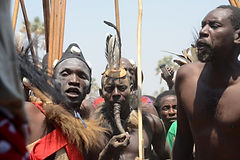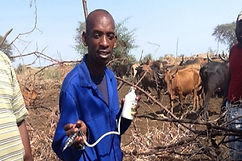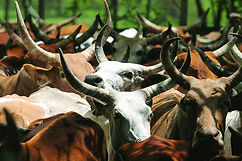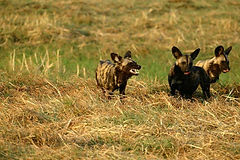Projects
Cattle Feed and Demonstration Farm
The farm is involved in cattle fattening with the eventual plan to set up the Namwala LIWI as well as meat production and processing with abattoir and complete value addition chains.
Phase 1 – Regional Cattle Feed and Demonstration Farm
The Regional cattle fattening and demonstration farm is in Namwala as a pilot project towards the overall enhancement of improving beef production in the Namwala region.
Phase 2 – Zero-grazing shed methods
Dairy farmer training to demonstrate making hay, hand cut and dried grass using wooden boxes with compartments for packing hay bales.
Instructions on growing elephant (nappier) grasses, fodder maize and fodder sorghum easy to grow and re-growing rapidly after cutting.
The aim of the project will be to increase productivity and profitability of indigenous cattle production by fattening cows and enhancing the capacity of rural farmers in cattle production and management.
Objectives:
-
To establish phase 1 of the Namwala LIWI by setting up a Regional Cattle Fattening and Demonstration Farm (CFDF)
-
The CFDF will build capacity of the local farmers on livestock improvement techniques through the demonstration farm.
-
The CFDF will improve the health condition and mature live weight of the indigenous cattle of the region.
-
The CFDF will generate income through the sale of fattened cattle and be a sustainable training facility for the region

Cattle Feed Farm
Methodology:
The CFDF will target an initial use of one hundred emaciated cattle bought from the community during off peak seasons.
The animals will be kept at the farm and fattened using rations developed from locally available feed resources.
The fattened animals will then be sold at profits which will in turn self-sustain the center. Investors can decide whether the project will pay back initial investors over time or go towards the continued building of phase 2, 3 and 4 of the project.
NACTT Roaming Veterinary Unit
Due to the width and breadth of cattle herding communities in the Namwala district and Kafue National Park it is proposed to set up a mobile veterinary unit to mitigate against cross diseases between livestock and wildlife.
We will need:
A veterinary officer
Custom designed vehicle
Refrigerator dart gun
VHF radios, GPS, Camera, binoculars, Medicines and equipment, rapid response equipment.

Roaming Vet
Cow Project

Fisheries in Namwala District
The Kafue Flats fisheries have attracted immigrant fisherman, fish traders and transporters in the last decade.
Today there are a total of 16 permanent and 48 semi-permanent fishing camps throughout the floodplains. Estimates show that this fishing system supports 1,260 fishermen that harvest a total of 7,000 tons of fish annually (CS) and DoF, 2006). In recent years’ demand from urban markets has exposed the fishing industry to extreme pressure and stress has begun to show.
Output has decreased over recent years to half. In response to this crisis Government has introduced sustainable fishing through hatcheries and restocking to alleviate the weight of the demand on the floodplains.
NACTT carries this mandate by Government by providing research and training for hatchery production and fishery business.

Fisheries


Beekeeping for Elephant-Human conflict
Beehive fencing project
NACTT canvasses support for the regional beehive fencing project in the Namwala GMA.
Beekeeping projects offer a two-fold opportunity to provide income while assisting to keep elephants out of inhabited areas.
The projects works by setting up beekeeping fences which are made up of suspended beehives attached together with wire around the areas that need protection. In the event of elephants trying to pass through and happen to contact the fence a swarm of bees is released chasing the elephants away.
This simple inexpensive project provides community income for small scale farmers while teaching wildlife conservation.
The Namwala GMA Beekeeping project requires start-up funds to assist with wire fences, beehives and a vehicle for the supervisor.

Beekeeping

Veterinary Laboratory
Give 'a Cow', Give 'Hope'
It is globally recognized that women produce 80 percent of the developing world's food, however sadly women also make up 70 percent of the world's poor. The NACTT Cow project assists women and men with the help of managing a Cow ‘living loan’ project. We invite you to partner with us and donate to help alleviate poverty, hunger and give hope in the Namwala district and give hope to those members in our community who most need help, especially widows, single mothers and abandoned wives.
Farmers willing to invest in themselves by undergoing the requisite training will be eligible to receive an in-calf heifer from NACTT. Beef farmers will then be contracted to the program and be trained to plant elephant (nappier) and grass (penisetum puperum) and construct zero-grazing sheds.
Material costs to erect a zero-grazing shed are $600.
FARMER 1 – Once the loaned cow gives birth it can produce up to 24 liters of milk per day, and sell extra milk approximately 20 liters to the dairy cooperative. This provides income of approximately US$50 per month. The first calf that is born is given to NACTT as a loan repayment and all future calves belong to farmer 1.
FARMER 2 – The 12-month calf of Farmer 1 is then given in-calf to Farmer 2 who is also required to raise the cow for 12 months until it gives birth to its calf. The one year old calf loan is passed on to the next farmer in line who has also received training and built zero-grazing shed.
NACTT Center
NACTT Cultural Heritage Program
NACTT is developing a cultural heritage plan that will include archaeological and cultural interpretation as follows:
-
Knowledge
-
Living culture
-
Traditional animal husbandry
-
Traditional wildlife conservation
-
Traditional ceremonies showcase
-
Recording of oral history
-
Books, visual, audio interpretation materials
-
Locate map and identify places of cultural significance





Oral History of the Ba Ila People
For centuries, the only method of transfer of knowledge and information of the Ila people has been through oral history around the campfire at night.
NACTT has been collating written and photographic records from elderly members of society. This documentation will be showcased through books, audio, and visuals at the NACTT Cultural Center.




The Bronze Statue of Chief Mukobela
Historically the Ila people kept cattle as an asset, as storage of wealth more safe than money. Cattle were only sold when cash was needed or for chiko, bride price in marriage. Animals are also slaughtered at funerals as a sign of respect in mourning, and in olden days’ large numbers of cattle were slaughtered the more cattle the more important the deceased. These funeral oxen were known as ‘masunto’, and dependent on the importance of the deceased numbers of slaughtered oxen could reach as many as 300.
A little before Zambia’s Independence in the 1960’s the Veterinary department became concerned at this practice seeing it as a terrible waste of resources and approached Chief Mukobela with the question of wouldn’t it be better if they reduced the number of ‘masunto’ to perhaps 30 and donate the value of the rest to a memorial e.g. school or orphanage. Chief Mukobela welcome the idea with a request that the school be constructed before he died and that a statue be erected of himself outside the school. The Government agreed and is thus the only Chief in Zambia to have a statue in his commemoration today.
The statue today tells the story of an important paradigm shift in the Ila way of life and what significantly positively affected the socio-economic welfare of our people. This act created a reduction in the amount of masunto slaughtered for a chief and trickled down to the common folk resulting in the beginning of behavioral change of the Ila community. From that time, onwards people reduced the number of masunto significantly. Today approximately 30 cattle are slaughtered for a chief and 10-15 for the average male and female.

The Bronze Statue of Chief Mukobela
“Ndi Mwila” – I am a Mwila
Chief Mukobela proud in his chief regalia immortalized in bronze
NACTT Cultural Center Protecting Heritage and Culture
NACTT is committed to the establishment of the Namwala Cultural and Traditional Trust Center. The museum will hold a permanent exhibition of environmental and cultural interpretation of the Namwala district. This showcase will display the many findings of documented oral history that will take place as well as information on the various Chiefs and traditional ceremonies.
Historical Sites
Of importance, we are keen to display and protect the cultural development of the Ila people stretching back to the Old Stone age. We will showcase archaeological findings on Kalala Island (Itezhi Tezhi) inhabited by the Ila’s people’s ancestors of hunting and agriculturalist communities dating back 12000 years ago, to 1000 A.D.

Namwala LIWI Veterinary Laboratory
The Laboratory at Namwala Veterinary Office is a 1st Level Laboratory which is under capacity, and needs to be upgraded to level 2 or 3 in order to combat diseases. The Lab currently lacks the safety Cabinet and thus samples requiring the use of a safety cabinet are sent to the Central Veterinary Research Institute which is about 485km from Namwala.
The Laboratory needs refrigeration that includes 3 upright refrigerators and 2 deep freezers with capacity of 320 litres.

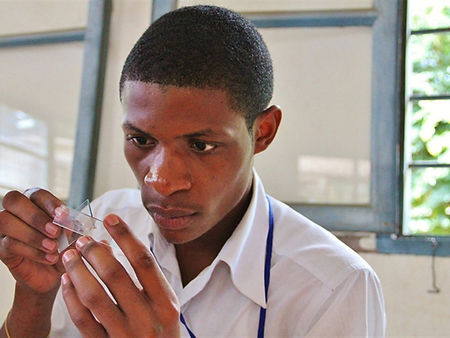
Wild Dog Scouts
Wild Dog Scout Training
The African Wild Dog remains high on the global list of endangered species with only less than 5,000 Wild Dogs remaining in the whole of Africa. NACTT is active in helping to combat further decline in the district with the Namwala Wild Dog Scout Patrol.
In addition to community awareness and training, NACTT trains and equips Wild Dog scouts to monitor and protect Wild Dogs in their habitat.
At the forefront of the initiative NACTT trains communities to understand the vital role Wild Dogs play in protecting wildlife. This community wide understanding is necessary to reduce human-wildlife conflict further supporting the scout’s efforts at protection.
The project urgently needs the following to ensure the work of the scouts:
Handheld radios
GPS Units
Radio Collars for Wild Dogs
Uniforms
Transportation





